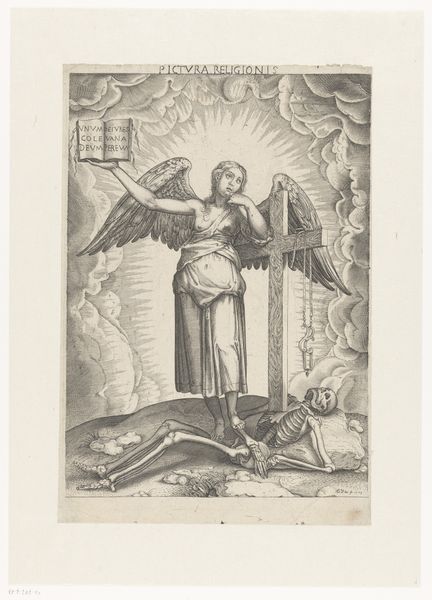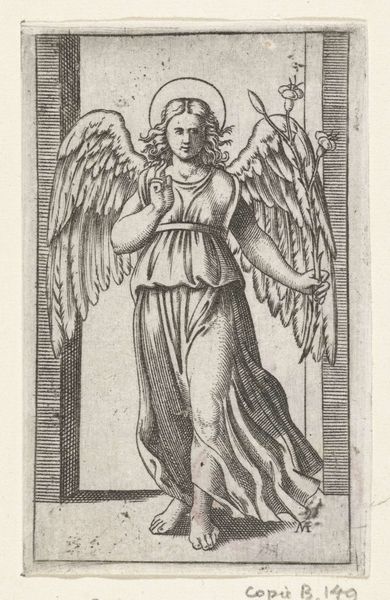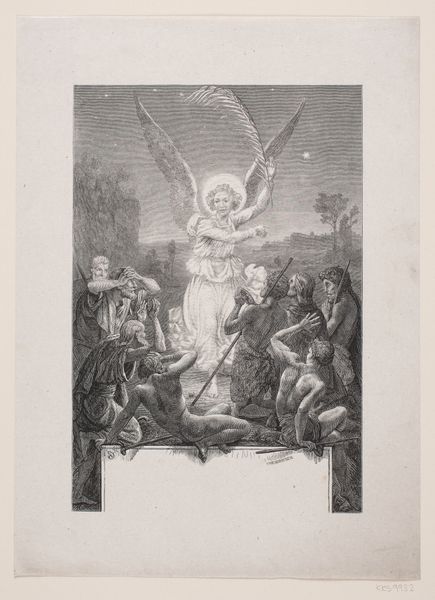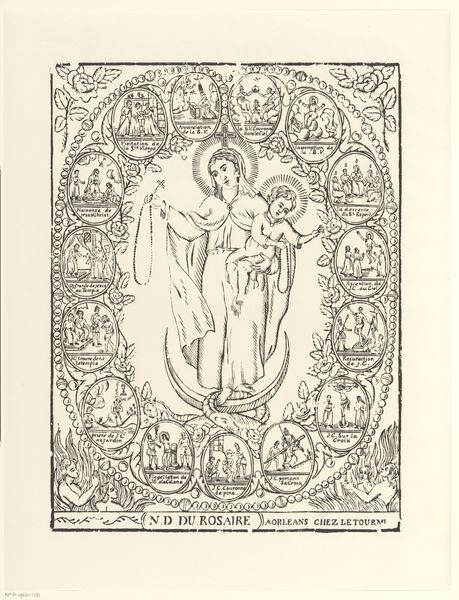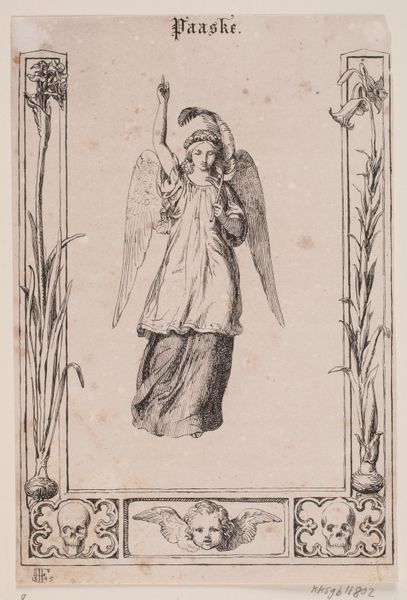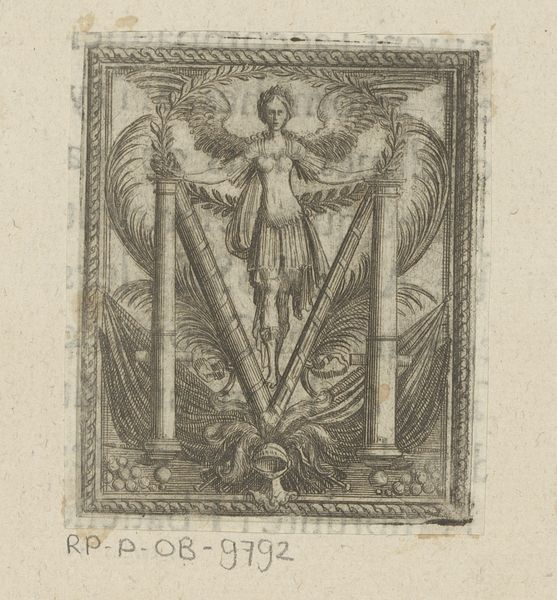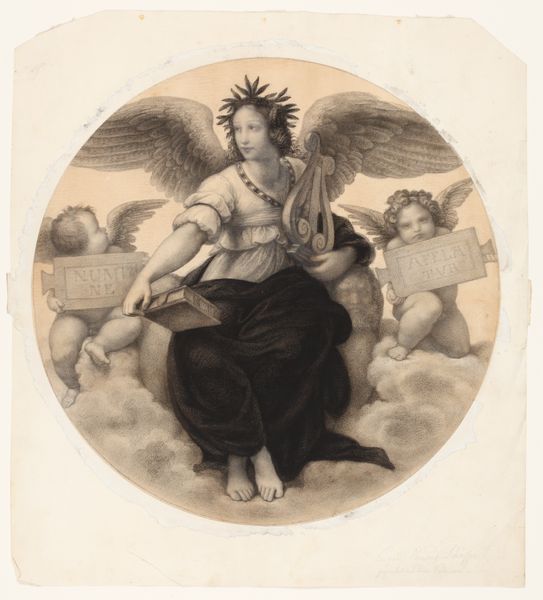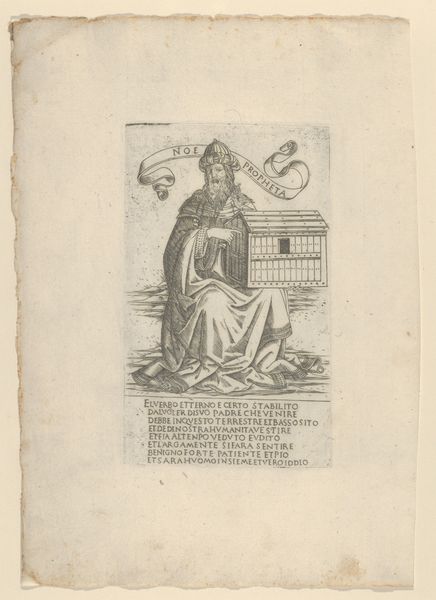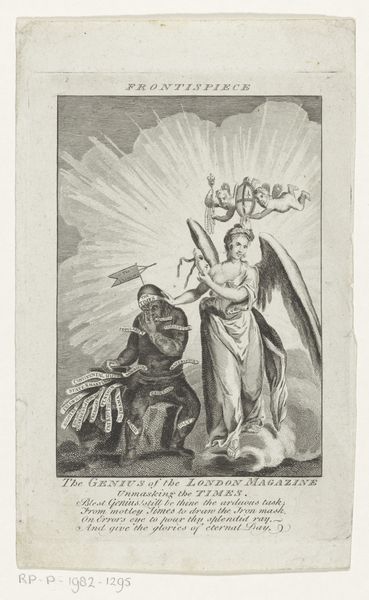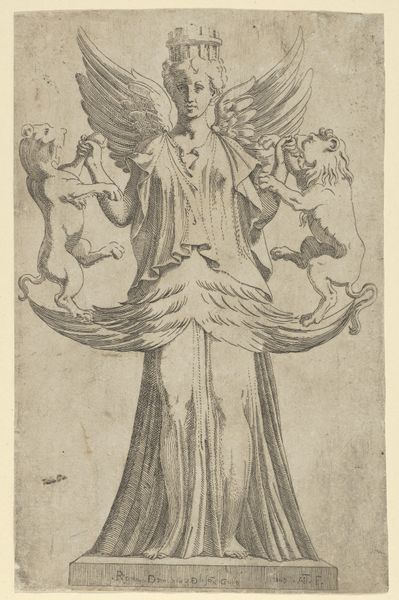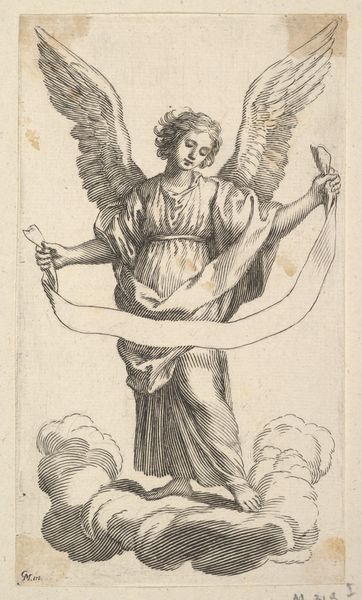
drawing, ink
#
portrait
#
drawing
#
neoclacissism
#
figuration
#
ink
#
academic-art
Dimensions: 220 mm (height) x 158 mm (width) (bladmaal)
Curator: Here we have Nicolai Abildgaard’s ink drawing, "Solgudens billede over en ørn," which translates to "Picture of the Sun God over an Eagle." It's currently held at the SMK, the National Gallery of Denmark. The piece, rendered in ink, aligns with Neoclassical aesthetics and likely dates from somewhere between 1743 and 1809. Editor: It strikes me as rather austere. The monochrome palette lends it a sense of ancient authority. The subject matter reinforces this feeling of antiquity. Curator: Indeed. Abildgaard was deeply engaged in the artistic and intellectual climate of his time. He admired classical antiquity and, like many Neoclassical artists, used historical and mythological subjects to promote values like civic virtue and order. Consider the political landscape; revolutions and reform movements were challenging established power structures. Neo-classicism offered an artistic vocabulary for articulating new forms of social and political identity, rooted in a past that could be selectively reconstructed and re-imagined to lend authority to contemporary concerns. Editor: Looking closer, the sun god, with his serene countenance, radiates a halo, but it's the eagle that really draws the eye. The bird holds an archaic symbolism power, foresight, and freedom. Do you see it referencing an older iconography here? Perhaps a link with ancient Rome, given the lettering. Curator: Exactly. The inscription dedicates the monument to Sol, or Sol Invictus, the Unconquered Sun, an important Roman deity. What’s also fascinating to me is thinking about how an artist working within the highly structured academic system engages with radical shifts happening socially and politically. Is this image meant as a reinforcement of power? Is it intended as commentary on enlightenment ideals, or the search for universal meaning during great transformation? Editor: Well, the use of Latin text is suggestive of enduring imperial power. It seems a statement rooted in history designed to transcend the ages. The text appears to be meticulously inscribed which shows deference to the historical object. I appreciate Abildgaard tapping into deep-seated cultural archetypes – solar deities, noble eagles– symbols with lasting potency in our collective psyche. Curator: These symbols provided a visual language for communicating ideas about authority, order, and perhaps even destiny, that continue to resonate today, in modified ways, through civic architecture and even in our understanding of historical power dynamics. Editor: Yes. It makes me reconsider how enduring symbols evolve within shifting social frameworks to be reinterpreted across generations.
Comments
No comments
Be the first to comment and join the conversation on the ultimate creative platform.

